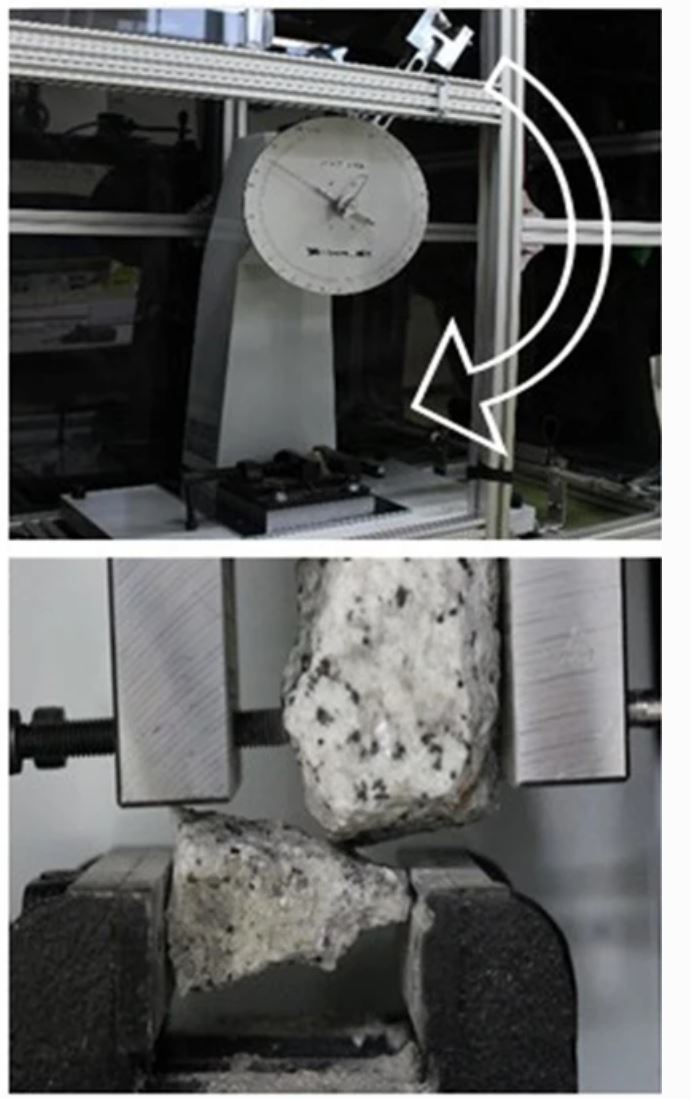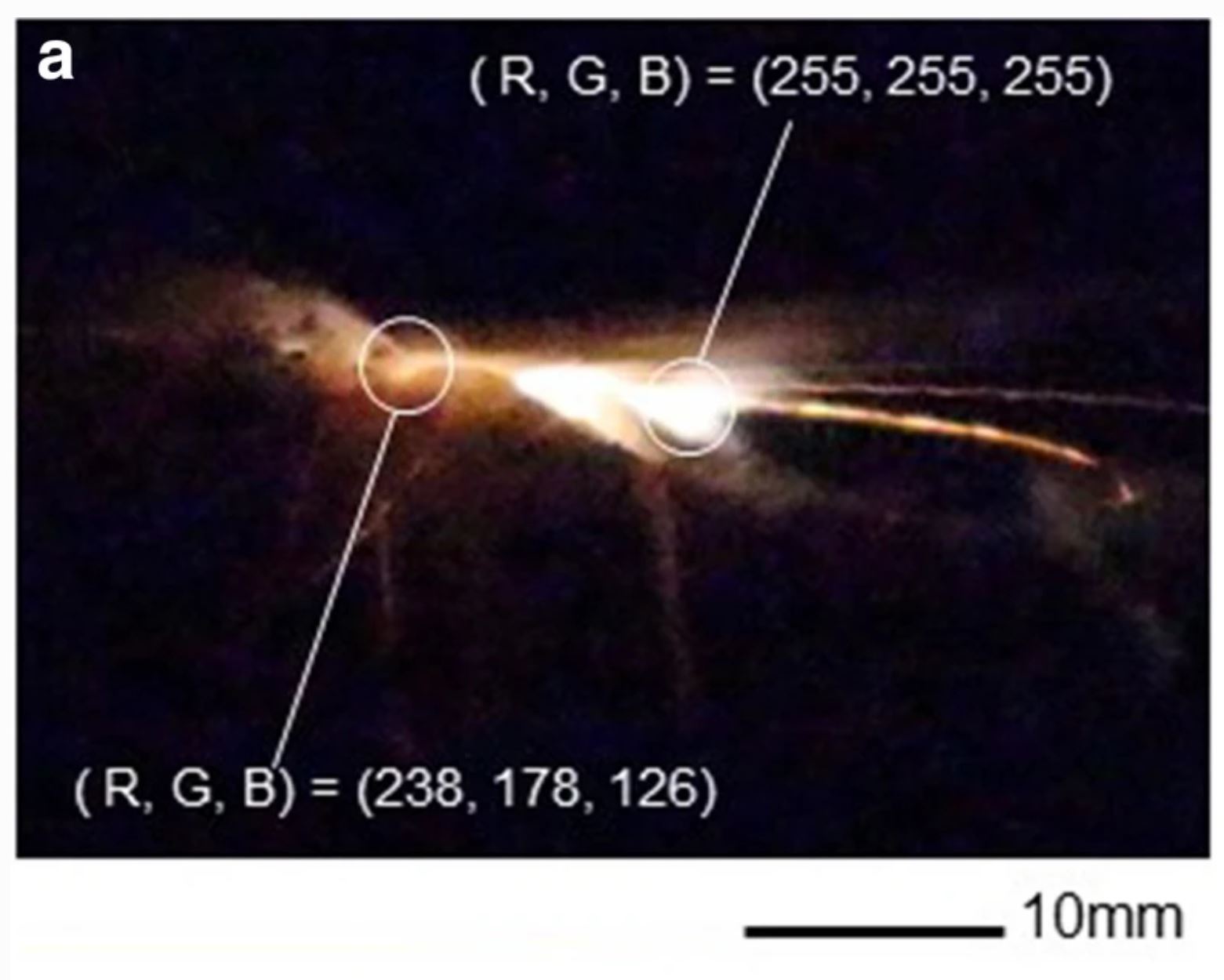29 September 2020
Landslide light – an experimental study
Posted by Dave Petley
Landslide light – an experimental study
Landslide light is the mass movement equivalent of the better known but still somewhat mysterious earthquake light (EQL) phenomena. According to Wikipedia:
An earthquake light is a luminous aerial phenomenon that reportedly appears in the sky at or near areas of tectonic stress, seismic activity, or volcanic eruptions. Skeptics point out that the phenomenon is poorly understood and many of the reported sightings can be accounted for by mundane explanations
The phenomenon is widely reported but poorly documented properly, and it appears to take many forms. There is considerable doubt as to whether the phenomenon is real, but investigations continue. A range of physical processes have been proposed to account for EQL, should it be real.
Landslide light has also been reported, mostly as a result of very large slope failures in crystalline rock masses. It is possible that in some cases earthquake light might in fact be landslide light, caused by coseismic slope failure But, once again, the existence of landslide light is unproven and is controversial.
A paper just published in the journal Earth, Planets and Space (Enomoto et al. 2020), available open access, presents an experimental study of the landslide light mechanism. In this work, the authors have energetically sheared two rock blocks against each other, and have recorded the resultant emissions using a very sensitive camera and with a spectroradiometer, which measures the spectrum of thermoluminescence from the rocks. The set up was quite basic, which is of course a positive – this is the illustration from the paper:

The experimental set up for the landslide light work of Enomoto et al. (2020).
.
The authors use the archive literature in Japan to suggest that at least five cases of earthquake lights were in reality landslide lights, arguing that the study provides insight into the wider phenomenon. The research was undertaken on a range of rocks representative of the potentially unstable mountains of Japan, including course-grained granite, pyroclastic rock, biotite-bearing rhyolite, limestone, and serpentinite.
The authors found that as a result of the collisions the rocks did generate photoemissions. The nature of these varied according to the rock type, with granite producing a “whitish spark streak during impact”, whereas the pyroclastic rock produced a “glowing gaseous red lightning”. This is the appearance of the emissions from granite for example:-

The results of one of the landslide light experiments, from Enomoto et al. (2020).
.
All of the rocks tested, except the serpentinite, generated photemissions (likely dominated by temperature driven frictional heating), but the authors concluded that the actual processes probably differed according to the mineralogy of the rocks.
This is a really interesting result, although I am not sure that it is particularly surprising. The authors write that the “experimental results are consistent with eye-witness testimony of landslide EQL.”
I wonder if this is true? The phenomenon generated here is very short-lived and is local to the shear surface. Landslide light is longer duration and appears beyond the ground surface. Are these two things the same? Either way this study is valuable for providing an approach to understand these reported events, and as with all good studies, the main conclusion might be that more research is needed.
Reference
Enomoto, Y., Yamabe, T., Mizuhara, K. et al. 2020. Laboratory investigation of earthquake lightning due to landslide. Earth Planets Space 72, 108. https://doi.org/10.1186/s40623-020-01237-8


 Dave Petley is the Vice-Chancellor of the University of Hull in the United Kingdom. His blog provides commentary and analysis of landslide events occurring worldwide, including the landslides themselves, latest research, and conferences and meetings.
Dave Petley is the Vice-Chancellor of the University of Hull in the United Kingdom. His blog provides commentary and analysis of landslide events occurring worldwide, including the landslides themselves, latest research, and conferences and meetings.
This particular phenomenon has been known for a long time by geochemists. These measurements serve to substantiate the fact more fully and are therefore useful. Excellent work.
I am reminded of flint being struck against steel or grinding wheels. Mechanical friction produces heat while fine particles are dislodged and combust.
Landslide and earthquake light sound like triboluminescence happening on a large scale. Hit two pieces of semi-transparent quartz together in the dark to see photoemissions – now imagine that effect compounded during a rock mass failure event when billions(?) of crystal bonds are rupturing simultaneously and sequentially.
https://geology.com/minerals/triboluminescence/
https://en.wikipedia.org/wiki/Triboluminescence
I believe that light dancing along the tops of waves is also a feature of a tsunami. Might that phenomena be linked?